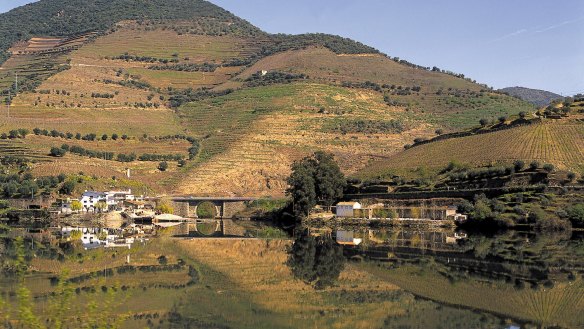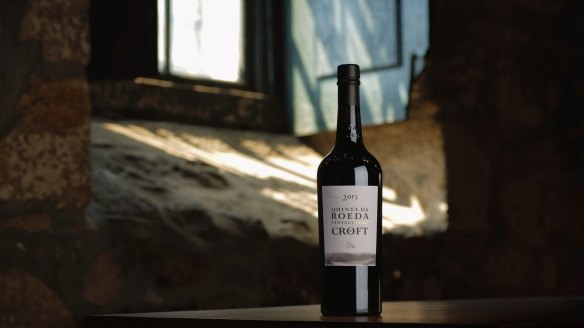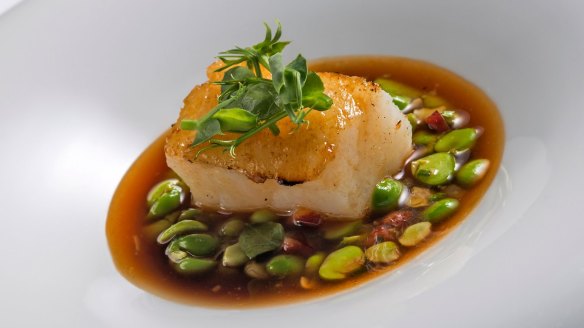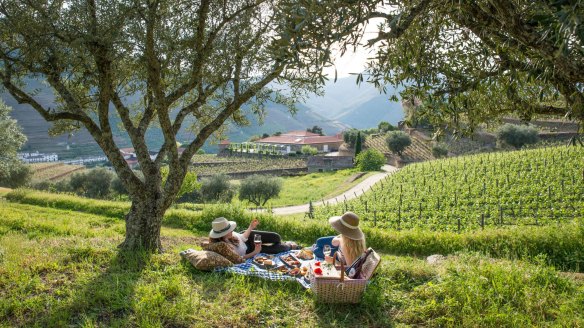Where to eat and drink in the Douro Valley, Portugal

The ancient Romans knew a lovely location when they saw one. Two millennia ago they found a delightful spot on the Douro River, planted vines and founded Porto. Their settlement eventually gave its name to a new country and the port wine produced here. Today, Portugal's second-largest city is a worthy launch-pad for an exploration of the Douro Valley.
Porto's gabled houses perch on a rocky gorge above the river mouth, creating a medieval old town overlaid with gilt-gleaming baroque excess. Ocean and river trade funded many a fine library, museum and art treasure over the centuries, and Porto's churches overflow with gold from the Americas.

Soak up the old-world charm at the 1920s Majestic Cafe, a fantasy of marble tabletops, spotted gilt mirrors and Belle Epoque glamour, or at Cafe Luso, where traditional Porto speciality tremocos (bread with yellow lupin beans) is an accompaniment to draught beer as you people-watch.
More recently, Porto has shaken off the weight of its history, developed a thriving arts scene and ventured into contemporary architecture. Its restaurants, too, have kicked into a higher, more up-to-date gear. Michelin-starred chef Vitor Matos, at the helm of Antiqvvm , matches smoked salmon with apple and beetroot foam, and chicken with chestnuts and Alentejo ham. Young chef Arnaldo Azevedo works wonders with degustation menus inside black-and-gold, designer-chic Palco, which spectacularly reinvents Portuguese classics such as sucking pig, and hake with corn mash.
Head down to the informal bars that crowd Douro's riverfront for a pre- or post-dinner drink. Sunset is a classic time for locals and tourists alike to stroll the quays, chatter in the wine bars and watch the setting sun tangle itself in the ironmongery of the Eiffel-designed bridge. The serious wine action, however, lies across the bridge in Vila Nova de Gaia, inside the city's wine lodges. Grapes have arrived here from along the Douro since the 17th century, to be transformed into port and stored in barrels.

Many early wine companies were founded by British traders shut out of the Burgundy wine market by the warring French. Drop in at Taylor's , established in 1692, for a self-guided audio tour through stacks of cobwebbed barrels. Stare over a thousand years of riverine history afterwards at Taylor's restaurant Barao Fladgate, which offers light versions of Portuguese dishes such as cod with creamy fennel, or lamb with olive crust and grilled corn.
Tastings at any lodge will introduce you to the subtleties of tawny, white and vintage ports. You can visit various port producers here, including Croft for chocolate-and-port pairings and Ferreira, which has a little museum and a 19th-century tasting room. Espaco Porto Cruz is a more 21st-century experience: it has a multimedia displays and hosts fashion and gastronomical events.
Another sign of the changing times is The Yeatman Hotel. It sits in cool white and pale lemon right among the rustic port lodges, its corridors enlivened with wine-related exhibitions, its light-flooded rooms decorated with farmhouse antiques. You can pair wines with roast pork in the restaurant, get rubbed with grape pips in the spa, and swim in a decanter-shaped pool.

Porto's newfound energy has more recently been rippling upstream and reinvigorating the entire Douro Valley. River cruisers and tourists now flock to this once overlooked wine region. The Douro flows only 200 kilometres from the Spanish border to the sea just beyond Porto, but packs in lovely landscapes and centuries of history. Castles brood from the heights, and ancient farms called quintas brace themselves on vine-clad slopes.
The Douro is the world's oldest wine region, officially demarcated in 1756. Grapes have been produced here since ancient times, though. The entire valley is contoured with age-old terraces and stone walls that support vines, as well as silvery olive trees and spring-blossoming almonds. The most glorious section lies between Bitetos and Regua.
The Douro has old bones, but a new generation of winemakers is changing the reputation of its fortified wine, for too long seen as a cheap pre-dinner drink for grey-haired Agatha Christie characters. The latest ports are lighter and fruitier, and many winemakers have now also turned to creating white wines using interesting local grape varieties such as malvasia fina, gouveio and rabigato.
Pinhao, considered to have the Douro's best soils and climate, is the heart of winemaking country. Locals say the vines "hear" the river flowing, which encourages them to greatness. Nineteenth-century Vintage House has a wine academy where you can learn more, though you might just settle into the Library Bar, where sommeliers can take you through an aperitif tasting. Tour the vineyard at Quinta da Roeda, owned by venerable port firm Croft, and taste port afterwards in the old stables. In the harvest season, you can clamber into the granite tanks and help tread the grapes.
Architect-designed cellar doors, chic hotels and Michelin-star restaurants now grace the Douro Valley as never before. Thirty kilometres downstream from Pinhao is Six Senses Douro Valley, which has brought an Asian sensibility and extravagant spa to a terracotta manor house amid the vines. Local winemakers moonlight as sommeliers in its Vale de Abraao restaurant.
There's more good dining – for example, on cod with almond crust and Lamego ham – at former railway warehouse Castas e Pratos, or at Cacho d'Oiro, which specialises in roast kid and oven-baked octopus.
Lamego, high above the river, is an old bishopric splendidly draped in baroque buildings, bell towers and ornate fountains. The Shrine of Our Lady of Remedies is an important pilgrim destination up a heart-banging flight of steps but, if your mind is more on temptations of the flesh, the town is also noted for its Raposeira sparkling wine and bola de Lamego smoked-ham sandwiches.
In the countryside nearby, you'll find Casa dos Viscondes da Varzea. The aristocratic quinta provides the chance to sample the estate wines and a local lunch of codfish and octopus rice. The family had its property confiscated during the socialist dictatorship, and effervescent owner Maria Manuel tells an entertaining tale of how she won it back.
It's also worth travelling into the hills across the river from Lamego to Casa de Mateus, a petite baroque palace of jewel-box prettiness reflected in ponds. The palace gardens are shaded by giant cypress trees and gaze over surrounding vineyards fat with tinta roriz grapes. The palace is owned by Mateus, one of Portugal's most famous labels, and has a wine-tasting cellar. The Alvarelhao rosé is famous. More recently, it has become less sweet, subtler and – like the "new" Douro Valley itself – has a bit of extra sparkle.
Details
Majestic Cafe, cafemajestic.com
Cafe Luso, cafelusodesde1935.com
Palco, hotelteatro.pt
Barao Fladgate, baraofladgate.com
Croft, croftport.com
Ferreira, sograpevinhos.com
Espaco Porto, Cruz myportocruz.com
The Yeatman Hotel, relaischateaux.com
Vintage House, vintagehousehotel.com
Quinta da Roeda, croftport.com
Six Senses Douro Valley, sixsenses.com
Castas e Pratos, castasepratos.com
Cacho d'Oiro, restaurantecachodoiro.pt
Casa dos Viscondes da Varzea, hotelruralviscondesvarzea.com
Casa de Mateus, casademateus.com
Brian Johnston travelled courtesy Viking Cruises, APT and at his own expense.
Restaurant reviews, news and the hottest openings served to your inbox.
Sign up